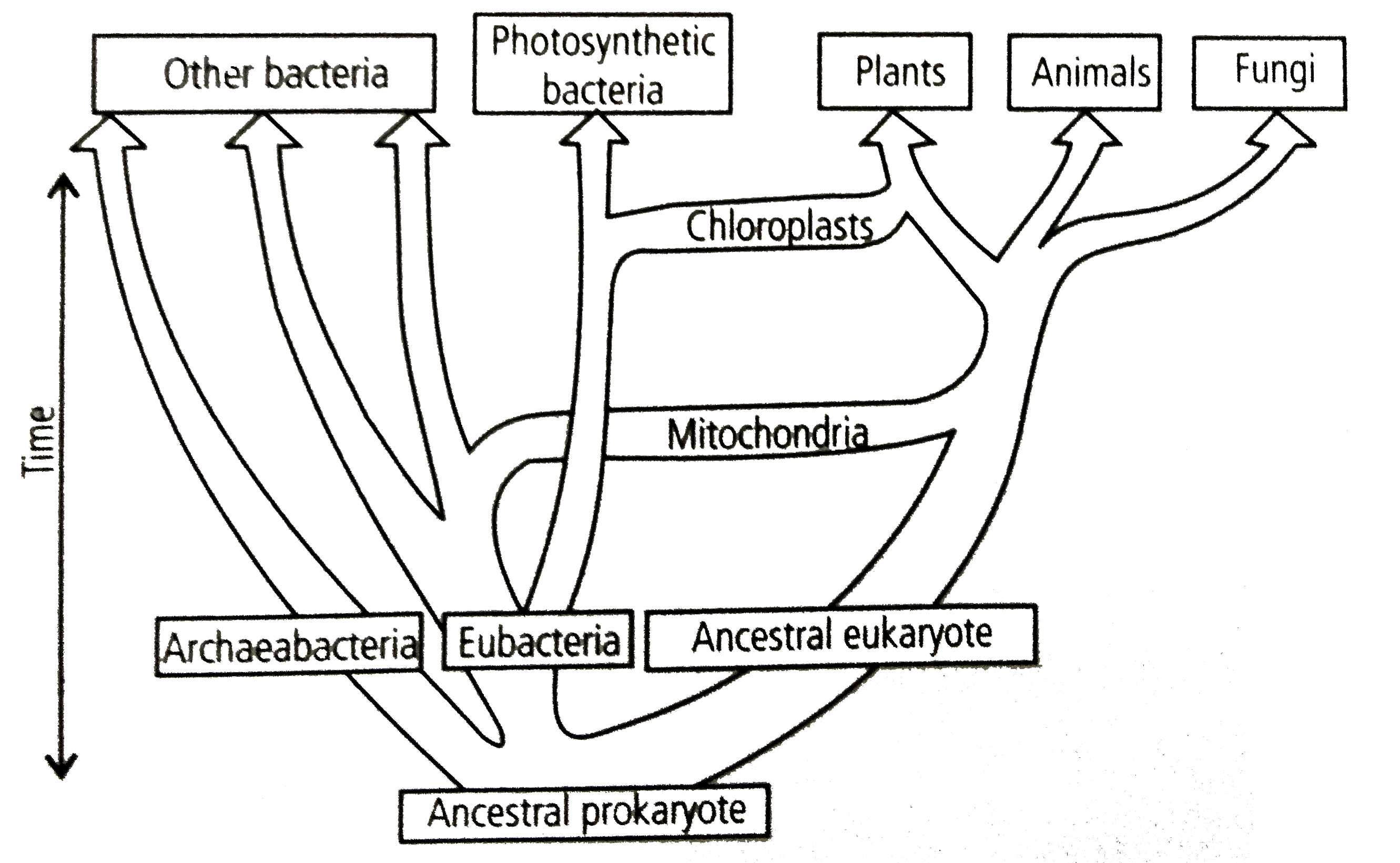Ribosomes of bacteria mitochondria and chloroplasts are of
50 S type
80 S type
70 S type
30 S type
The correct Answer is:C
To answer the question regarding the ribosomes of bacteria, mitochondria, and chloroplasts, we can follow these steps:
1. Understand Ribosome Structure:
Ribosomes are cellular structures responsible for protein synthesis. They are composed of ribonucleic acids (RNA) and proteins.
2. Identify Ribosome Types:
Ribosomes are categorized based on their sedimentation rates, which are measured in Svedberg units (S). The common types are:
- 30S
- 50S
- 70S
- 80S
3. Examine Bacterial Ribosomes:
Bacteria are prokaryotic organisms, and they contain 70S ribosomes. These ribosomes are made up of two subunits: a 50S large subunit and a 30S small subunit.
4. Analyze Mitochondrial and Chloroplast Ribosomes:
Mitochondria and chloroplasts are organelles found in eukaryotic cells. They are believed to have originated from ancestral bacteria through endosymbiosis. As a result, they also contain 70S ribosomes, similar to those found in bacteria.
5. Conclude the Answer:
Since all three entities (bacteria, mitochondria, and chloroplasts) contain 70S ribosomes, the correct answer to the question is option C: 70S.
Final Answer:
The ribosomes of bacteria, mitochondria, and chloroplasts are of 70S type (Option C).
---
Ribosomes are cellular structures responsible for protein synthesis. They are composed of ribonucleic acids (RNA) and proteins.
Ribosomes are categorized based on their sedimentation rates, which are measured in Svedberg units (S). The common types are:
- 30S
- 50S
- 70S
- 80S
Bacteria are prokaryotic organisms, and they contain 70S ribosomes. These ribosomes are made up of two subunits: a 50S large subunit and a 30S small subunit.
Mitochondria and chloroplasts are organelles found in eukaryotic cells. They are believed to have originated from ancestral bacteria through endosymbiosis. As a result, they also contain 70S ribosomes, similar to those found in bacteria.
Since all three entities (bacteria, mitochondria, and chloroplasts) contain 70S ribosomes, the correct answer to the question is option C: 70S.
The ribosomes of bacteria, mitochondria, and chloroplasts are of 70S type (Option C).
Topper's Solved these Questions
- STRUCTURE OF THE CELLBOOK - DINESH PUBLICATION ENGLISHCHAPTER - STRUCTURE OF THE CELLEXERCISE - Check your Grasp
17 Videos
- STRUCTURAL ORGANISATION IN ANIMALS BOOK - DINESH PUBLICATION ENGLISHCHAPTER - STRUCTURAL ORGANISATION IN ANIMALS EXERCISE - Check your grasp
10 Videos
- THE CELL : THE BASIC UNIT OF LIFE BOOK - DINESH PUBLICATION ENGLISHCHAPTER - THE CELL : THE BASIC UNIT OF LIFE EXERCISE - CHECK YOUR GRASP
12 Videos
Similar Questions
Knowledge Check
The element that is not very mobile and remains fixed to mitochondria and chloroplasts is
ApotassiumBcalciumCsulphurDironGiven diagram illustrates an evolutionary tree.

Which of the following statements can be deduced from the given evolutionary tree?
(i) The ancestral eukaryotes were anaerobic.
(ii) All eukaryotes were anaerobic.
(ii) All eukaryotes possess mitochondria.
(iii) Eubacteria and Eukaryota have a common ancestor whereas Archebacteria have a unique and independent origin.
(iv) Mitochondria and chloroplasts have similar genomes.
(v) Mitochondria are presents in plants, animals and fungi.
(vi) chloroplasts and mitochondria arose asendosymbionts.
(vii) Fungi and animals lost chloroplasts during evolution.Aiii,v and viBi,v and viCii,iii,iv and vDi,v,vi and vii
The symbiont hypothesis suggests that there are similarities between prokaryotes, mitochondria, and chloroplasts like
View SolutionFunction of electron transport chain in both mitochondria and chloroplasts is to develop
View SolutionThe presence of DNA in mitochondria and chloroplast supports the hypothesis that
View SolutionNucleotides/nucleic acids occur in
(a) Ribosomes
(b) Mitochondria
(c) DNA, RNA, chloroplasts and nucleus
(d) All the above
View SolutionRead the following statements :
i. presence of DNA.
ii. Presence of cristae.
iii. Presence of the 70S ribosome.
iv. Enzyme for carbohydrate synthesis.
v. Site for oxidative phosphorylation.
How many of the above statements are in common for mitochondria and chloroplast ?
View SolutionIn C2 cycle oxygenation and decarboxylation is occur respectively in:
1) Chloroplast and peroxisome
2) Chloroplast and mitochondria
3) Mitochondria and chloroplast
4) Mitochondria and peroxisome
View Solution
